Abstract
Infections with coccidioides immitis have been frequently associated with circumstances suggesting the likelihood of occupational origin. Some cases have been accepted as compensable by insurance carriers, the Industrial Accident Commission, and the courts. The factors considered in determining whether or not infection is of occupational origin are reviewed under the following headings.
1. Laboratory infections.
2. Other infections due to exposure to contaminated articles, arising outside endemic areas.
3. Infections in employees entering endemic areas pursuant to their occupations.
4. Primary cutaneous inoculation.
5. Localization and/or aggravation of pre-existing coccidioidomycosis by occupational injury.
6. Infections in agricultural workers imported into endemic areas.
7. Infections in residents of endemic areas alleged to result from occupational exposures.
Full text
PDF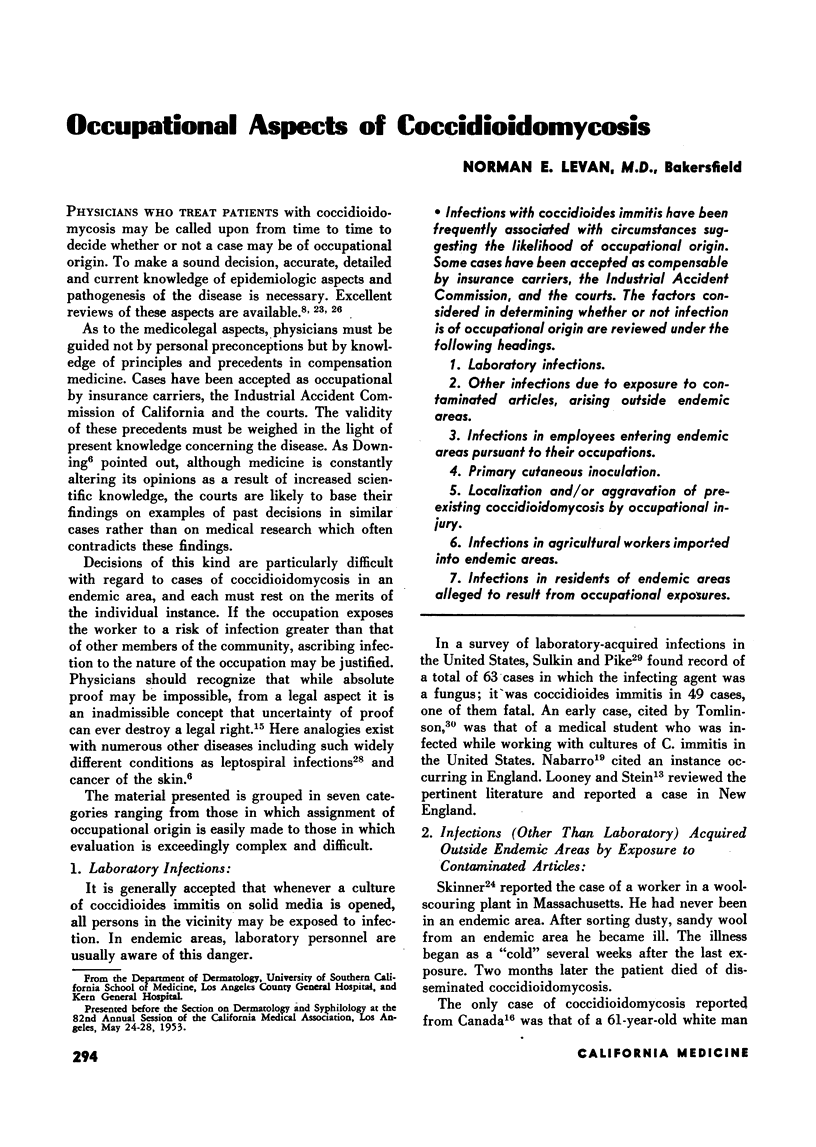
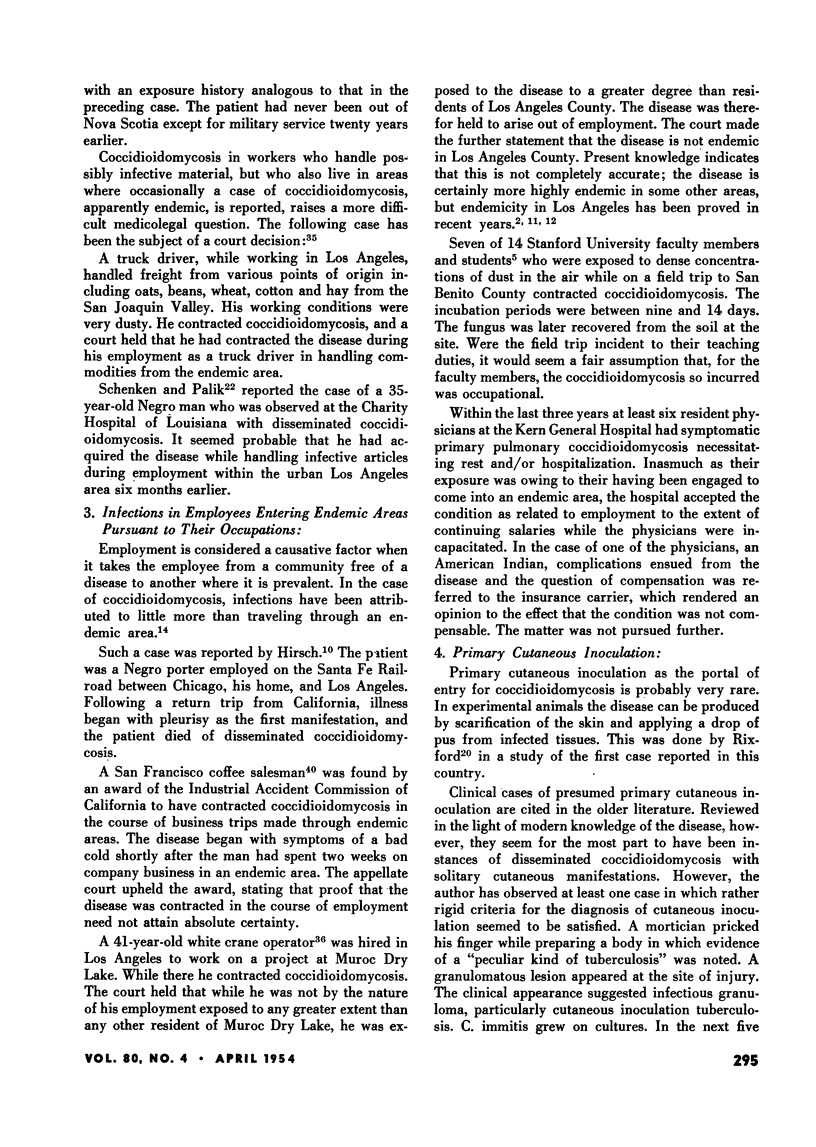
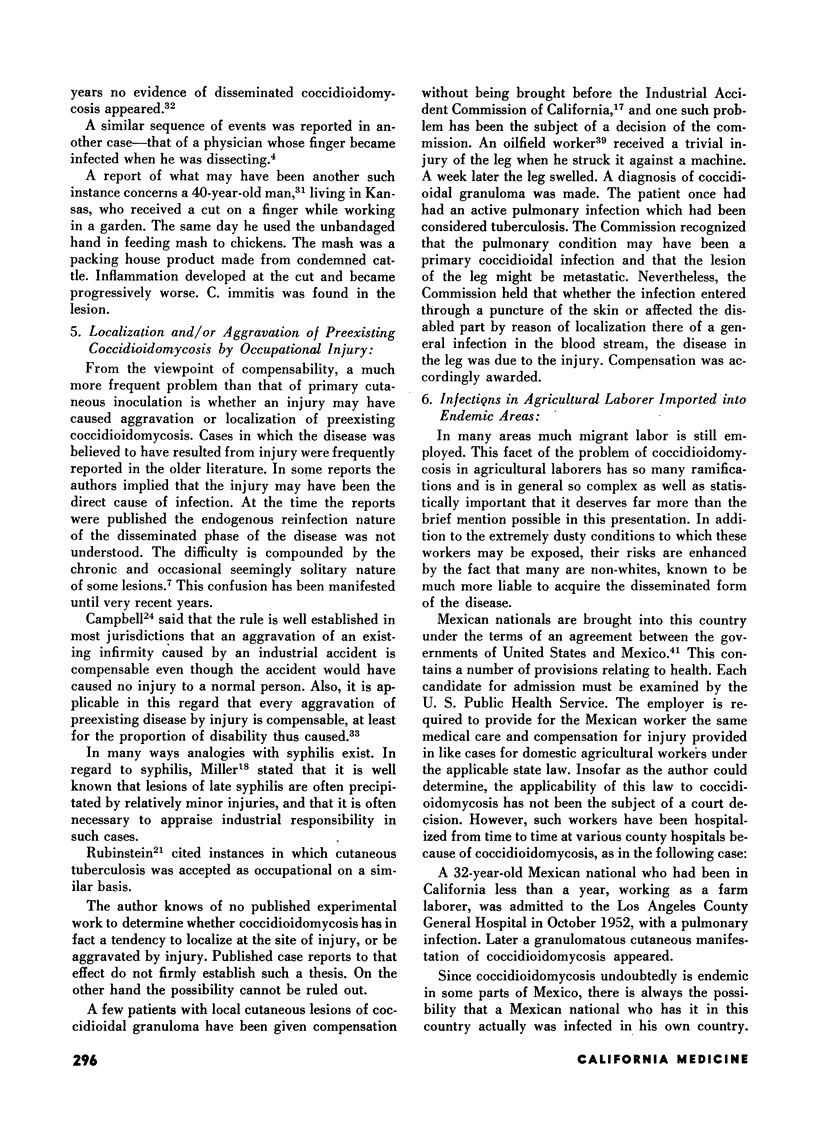
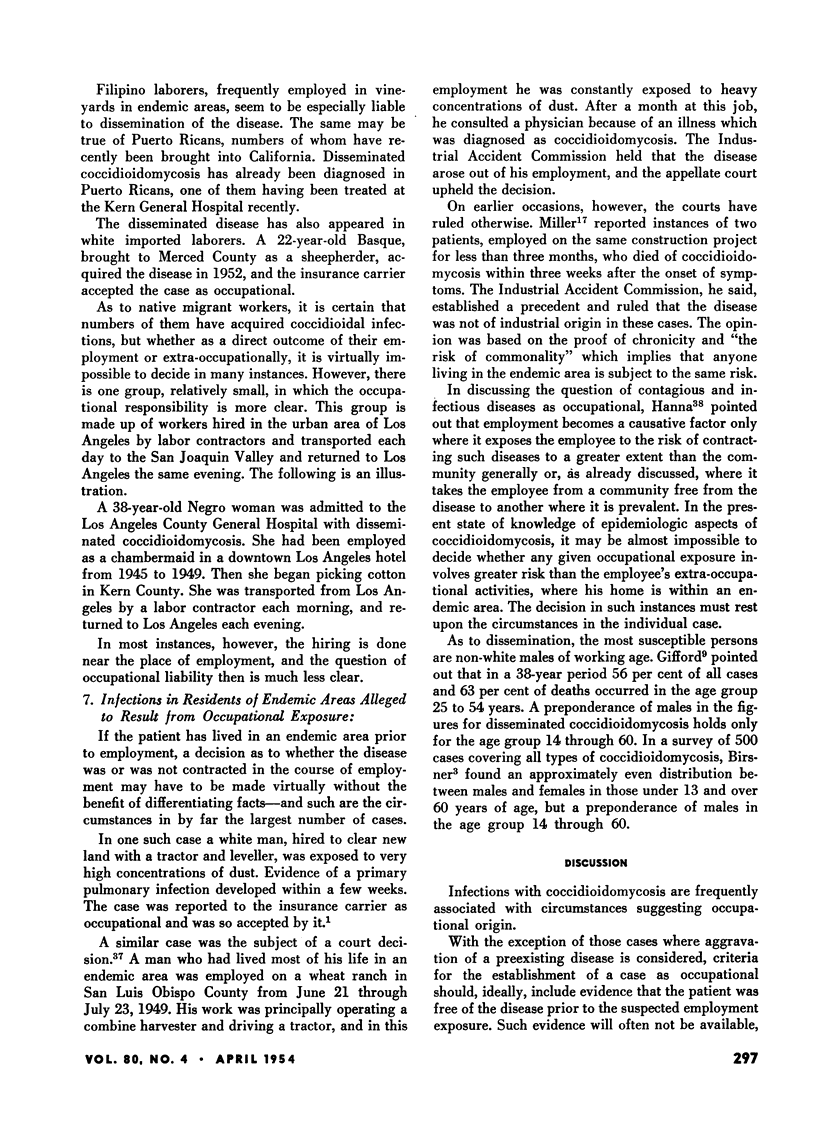
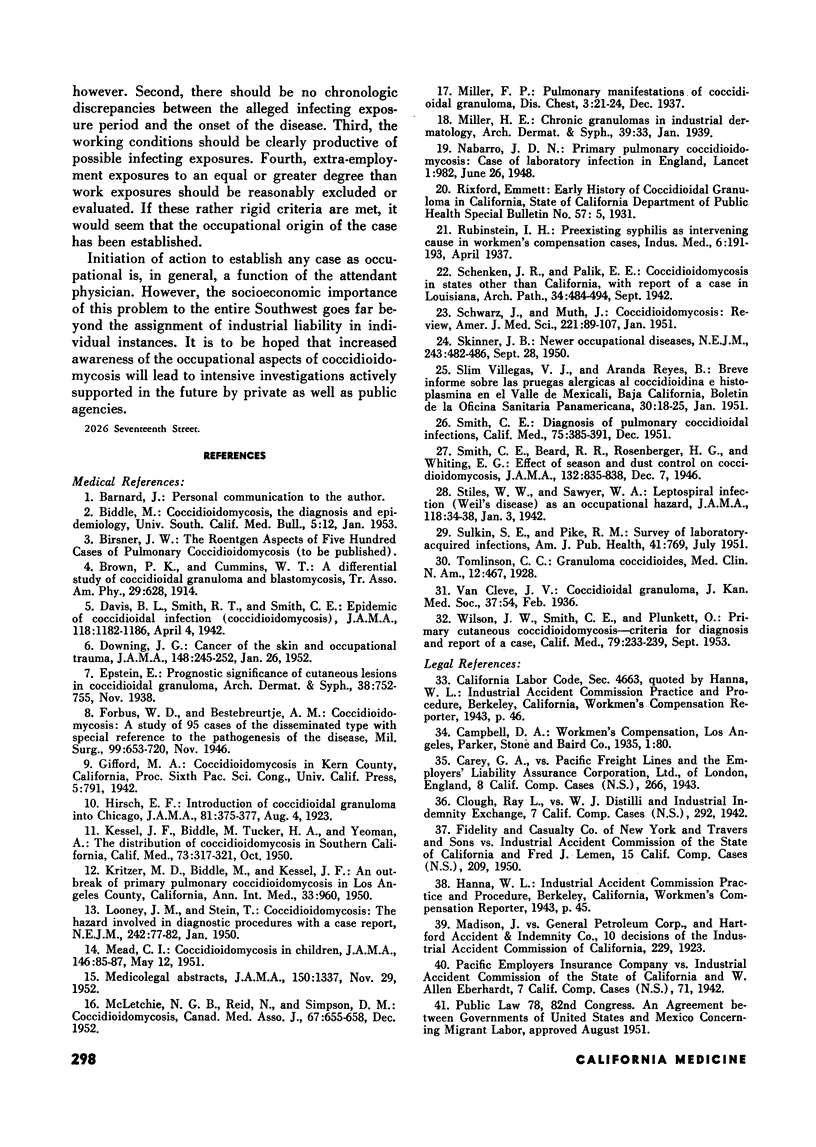
Selected References
These references are in PubMed. This may not be the complete list of references from this article.
- DOWNING J. G. Cancer of skin and occupational trauma. J Am Med Assoc. 1952 Jan 26;148(4):245–252. doi: 10.1001/jama.1952.02930040001001. [DOI] [PubMed] [Google Scholar]
- KESSEL J. F., BIDDLE M., TUCKER H. A., YEAMAN A. The distribution of coccidioidomycosis in Southern California. Calif Med. 1950 Oct;73(4):317–321. [PMC free article] [PubMed] [Google Scholar]
- KRITZER M. D., BIDDLE M., KESSEL J. F. An outbreak of primary pulmonary coccidioidomycosis in Los Angeles County, California. Ann Intern Med. 1950 Oct;33(4):960–990. doi: 10.7326/0003-4819-33-4-960. [DOI] [PubMed] [Google Scholar]
- LOONEY J. M., STEIN T. Coccidioidomycosis; the hazard involved in diagnostic procedures, with report of a case. N Engl J Med. 1950 Jan 19;242(3):77-82, illust. doi: 10.1056/NEJM195001192420301. [DOI] [PubMed] [Google Scholar]
- MCLETCHIE N. G. B., REID N., SIMPSON D. M. Coccidioidomycosis. Can Med Assoc J. 1952 Dec;67(6):655–658. [PMC free article] [PubMed] [Google Scholar]
- MEAD C. I. Coccidioidomycosis in children. J Am Med Assoc. 1951 May 12;146(2):85–87. doi: 10.1001/jama.1951.03670020007003. [DOI] [PubMed] [Google Scholar]
- SCHWARZ J., MUTH J. Coccidiomycocis: a review. Am J Med Sci. 1951 Jan;221(1):89–107. doi: 10.1097/00000441-195101000-00013. [DOI] [PubMed] [Google Scholar]
- SKINNER J. B. Newer occupational diseases. N Engl J Med. 1950 Sep 28;243(13):482–486. doi: 10.1056/NEJM195009282431303. [DOI] [PubMed] [Google Scholar]
- SULKIN S. E., PIKE R. M. Survey of laboratory-acquired infections. Am J Public Health Nations Health. 1951 Jul;41(7):769–781. doi: 10.2105/ajph.41.7.769. [DOI] [PMC free article] [PubMed] [Google Scholar]
- VILLEGAS V. J. S., ARANDA REYES B. Breve informe sobre las pruebas alergicas a la coccidioidina e histoplasmina en el Valle de Mexicali, Baja California. Bol Oficina Sanit Panam. 1951 Jan;30(1):18–25. [PubMed] [Google Scholar]
- WILSON J. W., SMITH C. E., PLUNKETT O. A. Primary cutaneous coccidioidomycosis; the criteria for diagnosis and a report of a case. Calif Med. 1953 Sep;79(3):233–239. [PMC free article] [PubMed] [Google Scholar]


